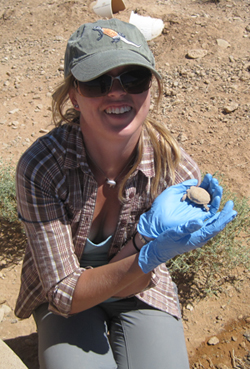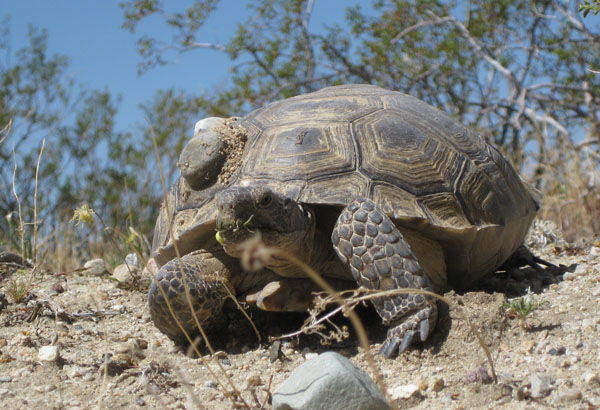Habitat Selection, Space Use, and Factors Affecting Recruitment of Desert Tortoises in the Mojave National Preserve
Background

The Mojave Desert Tortoise (Gopherus agassizii) has been a protected species in California under federal and state law for just over two decades. It was originally listed as threatened due to serious and persistent declines across much of its range. Currently, few populations appear to be stable or increasing and many populations are plagued by persistently low recruitment or bouts of high adult mortality. Some of the factors implicated in population declines include increased predation of juveniles by ravens, regional droughts, road mortality, and possibly upper respiratory tract disease. However, as policy-makers push for increased development of southern California's deserts for solar and wind energy, the familiar threat of habitat loss looms larger than ever.
A primary goal of conservation biology is to minimize or alleviate potential conflicts between competing development pressures and the maintenance of viable wildlife populations and communities. One method for accomplishing this is to fully understand the needs and habitat use of species likely to be affected by development and to guide development in ways that preserve habitat elements necessary for species persistence.
With desert tortoises, as with many reptile species, the ecology of juveniles remains an enigma. It is unclear what "typical" sources and rates of mortality are and whether juveniles use habitat and select forage materials similar to that of adults. Moreover, there is considerable uncertainty about which factors favor the survival of individuals during their early years. Identifying landscape features, plant communities, or other factors that improve survival of young desert tortoises will promote the recovery and persistence of desert tortoise populations and should allow land managers to both guide development away from favorable areas as well as to potentially restore degraded areas or habitats.
Objectives
We have three primary objectives with our research.
- Identify patterns of habitat and space use of juvenile desert tortoises.
- Identify habitat elements and/or vegetation that favors survival of desert tortoises.
- Explore strategies for increasing growth and survival of juvenile tortoises in semi-captive conditions for immediate rehabilitation of desert tortoises in protected areas.
Our work takes place in the Mojave National Preserve at the newly opened Ivanpah Desert Tortoise Research Facility and involves collaborators Tracey Tuberville and Kurt Buhlmann of The University of Georgia's Savannah River Ecology Lab. Our work also involves the US Fish and Wildlife Service and the National Park Service - Mojave National Preserve.

The picture above is of a female desert tortoise outfitted with a radio-transmitter. Her offspring will later be studied to determine what landscape features they select and which features are most conducive to increased survival.
